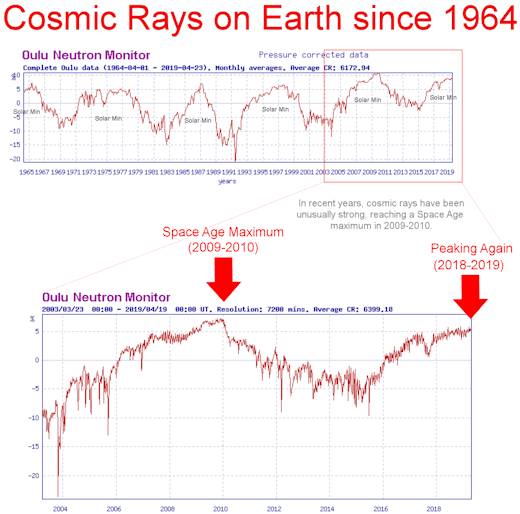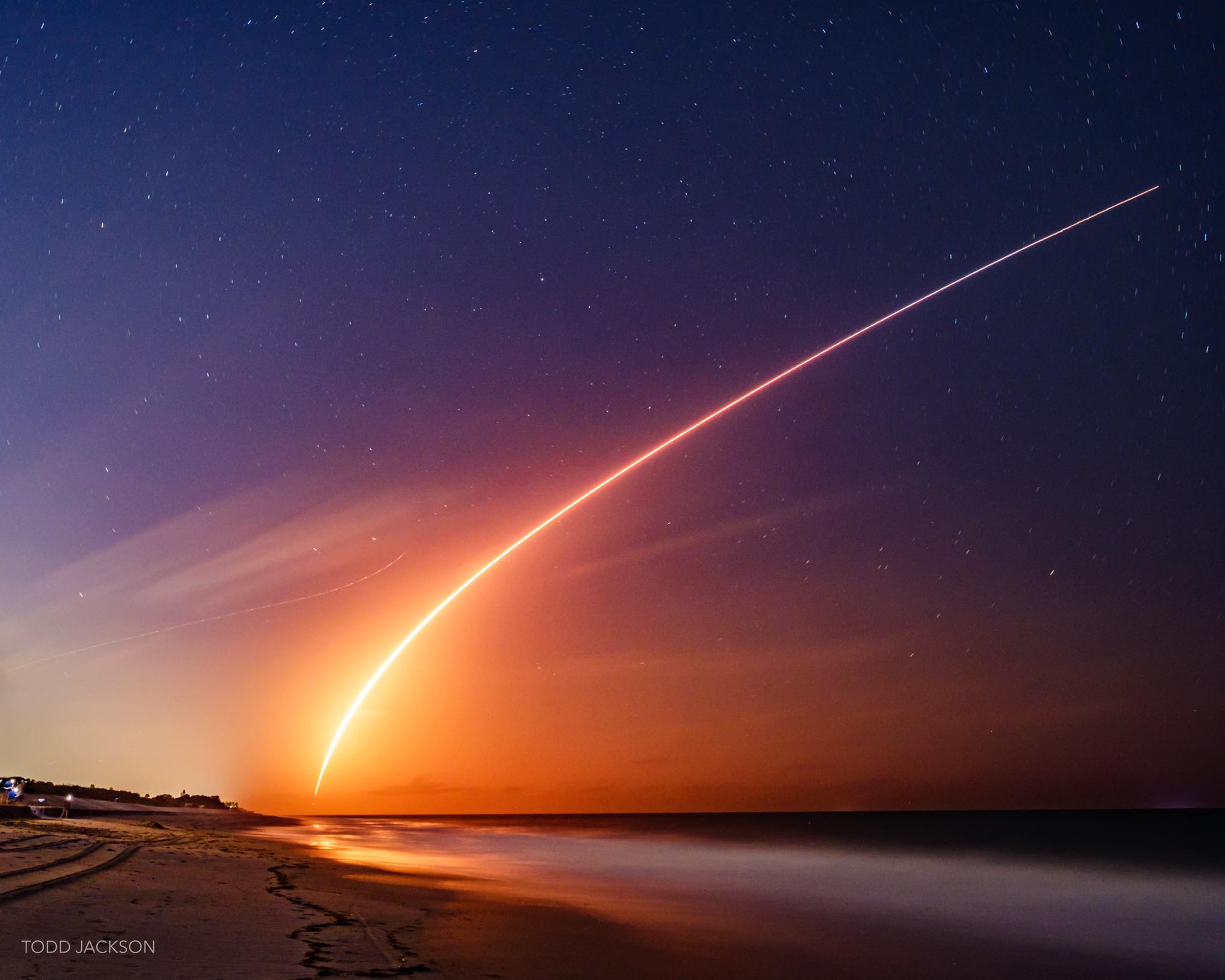CodeRedR51
Premium
- 55,683

- United States
Has been pushed back to 9:00pm EDT.I'm eagerly awaiting to watch this in the UK.
Has been pushed back to 9:00pm EDT.I'm eagerly awaiting to watch this in the UK.

Yes, there is life on Mars. But can we handle the truth? No, NASA doesn't think so, and hasn't for long, long time.
(CNN)NASA's next mission to Mars will be its most advanced yet. But if scientists discover there was once life -- or there is life -- on the Red Planet, will the public be able to handle such an extraterrestrial concept?
NASA chief scientist Jim Green doesn't think so.
"It will be revolutionary," Green told the Telegraph. "It will start a whole new line of thinking. I don't think we're prepared for the results. We're not."

NASA Chief Scientist Jim Green thinks news of life on Mars is coming soon, and the public isn't prepared to hear it.
The agency's Mars 2020 rover, set to launch next summer, will be the first to collect samples of Martian material to send back to Earth. But if scientists discover biosignatures of life in Mars' crust, the findings could majorly rock astrobiology, said Green, the director of the Planetary Science Division at NASA.
"What happens next is a whole new set of scientific questions," he said. "Is that life like us? How are we related?"
The Mars 2020 rover, along with the European Space Agency's ExoMars rover, will drill into the Martian crust. The surface of the Red Planet is believed to be radioactive, so if there is life on Mars, it likely lives below ground.
"We've never drilled that deep," he told the Telegraph. "When environments get extreme, life moves into the rocks."
The principle's been proven on our home planet: After drilling miles into the Earth, researchers found more life in the Earth's crust than on its surface, he said.
"The bottom line is, where there is water there is life."
And if the agencies' new rovers find proof that water once flowed on Mars, he said, the confirmation could come weeks or months of landing -- so buckle up, space lovers. The realm of possibility might get much wider very soon.
https://www.cnn.com/2019/09/30/us/nasa-life-on-mars-jim-green-scn-trnd/index.html
There have been some very significant recent discoveries. One is the annual methane cycle, rising in the summer, shrinking in the winter.There's an awful lot of "if"s in all that. Sure maybe there is or was life on Mars. But I don't see how we're on the verge of discovering life there. On the verge of discovering if there was water on Mars maybe, but it's still a big step to life.
As for the "can't handle the truth" part, that's pure balderdash. An alleged scientist should know better.
I'll throw this in here anyway though:
View attachment 854871





I am really not sure that anything short of aliens landing in central park in view of everybody is going to have any sort of immidiate impact on society. Definitely not something bacteria like found on in a dusty rock on Mars. I agree with Bob, that hyperbole Green was spewing is quite unbecoming.Yes, there is life on Mars. But can we handle the truth? No, NASA doesn't think so, and hasn't for long, long time.
(CNN)NASA's next mission to Mars will be its most advanced yet. But if scientists discover there was once life -- or there is life -- on the Red Planet, will the public be able to handle such an extraterrestrial concept?
NASA chief scientist Jim Green doesn't think so.
"It will be revolutionary," Green told the Telegraph. "It will start a whole new line of thinking. I don't think we're prepared for the results. We're not."

NASA Chief Scientist Jim Green thinks news of life on Mars is coming soon, and the public isn't prepared to hear it.
The agency's Mars 2020 rover, set to launch next summer, will be the first to collect samples of Martian material to send back to Earth. But if scientists discover biosignatures of life in Mars' crust, the findings could majorly rock astrobiology, said Green, the director of the Planetary Science Division at NASA.
"What happens next is a whole new set of scientific questions," he said. "Is that life like us? How are we related?"
The Mars 2020 rover, along with the European Space Agency's ExoMars rover, will drill into the Martian crust. The surface of the Red Planet is believed to be radioactive, so if there is life on Mars, it likely lives below ground.
"We've never drilled that deep," he told the Telegraph. "When environments get extreme, life moves into the rocks."
The principle's been proven on our home planet: After drilling miles into the Earth, researchers found more life in the Earth's crust than on its surface, he said.
"The bottom line is, where there is water there is life."
And if the agencies' new rovers find proof that water once flowed on Mars, he said, the confirmation could come weeks or months of landing -- so buckle up, space lovers. The realm of possibility might get much wider very soon.
https://www.cnn.com/2019/09/30/us/nasa-life-on-mars-jim-green-scn-trnd/index.html
I am really not sure that anything short of aliens landing in central park in view of everybody is going to have any sort of immidiate impact on society. Definitely not something bacteria like found on in a dusty rock on Mars. I agree with Bob, that hyperbole Green was spewing is quite unbecoming.
We may be drifting off topic here. But I agree with your thought. In my opinion, the basic structure of the DNA molecule to be found on Mars will be the same as on Earth, merely coded a bit differently. It will have major implications for astrobiology, evolution theory, and religion. The ancient texts will be rewritten, to be sure.I wonder if he was implying it in a religious context without actually stating it that way. If any potential basic life shares DNA with that found on earth, then it has great implications in contradicting religious creation texts.
But some experts we spoke to disagreed that finding alien life would truly change much on Earth.
“Well yes, maybe [we’re unprepared],” said Wieger Wamelink, a senior ecologist at Wageningen University & Research and an advisor to the MarsOne project, in an email to Gizmodo. But this “is mostly a philosophical issue that will have an impact, but not on day-to-day life,” he said. “The stock exchange will not react and countries will not go to war because of this.”
Steve Clifford, a senior scientist at the Planetary Science Institute, doesn’t think we’re unprepared for such a discovery, pointing to an episode 23 years ago as an important precedent.
“In 1996, scientists at the Johnson Space Center announced that they had discovered potential evidence of life in the Martian meteorite 84001,” Clifford wrote in an email to Gizmodo. “That announcement was widely covered in the media, and the public followed that announcement with great interest, but [there’s] little evidence that [it] provoked any widespread concern. I think that decades of rational scientific discussion about the likelihood that life is likely prevalent in the universe has helped prepare the way, should we discover unequivocal evidence of life on Mars or elsewhere.”
Given that the potential for alien life to be found in our solar system has been a mainstream idea for decades, is it even accurate to say such a discovery would be revolutionary?
“I think news of life on Mars, if found, would be a big deal that would shake up people’s thinking about how rare or common life is in the cosmos,” Bethany Ehlmann, a research scientist at NASA Jet Propulsion Laboratory and a member of the NASA 2020 rover team, wrote to Gizmodo. “It would be awesome and thought-provoking, which is what I bet Dr. Green was trying to convey.”
“Yes, I think such a discovery would be momentous, more momentous than the Copernican Revolution, but philosophically very similar,” David Weintraub, a professor of astronomy at Vanderbilt University, told Gizmodo in an email. “Pre-Copernicus, most thinkers—whether for religious or philosophical or metaphysical reasons—accepted that Earth was the center of the universe and thus that we were likely the center of creation and of God’s attention... Copernicus de-centered humanity. The discovery of life beyond the Earth will, similarly, decenter humanity. Life on Earth would no longer be unique. Honestly, I can’t think of a more momentous discovery.”
Bruce Jakosky, a professor of geological sciences at the University of Colorado, agrees. Even though “we suspect that life could be widespread throughout the galaxy,” he said, “finding even one example of life off of the Earth would be a big deal.” That said, the discovery would have “no immediate consequences for anybody but us scientists who are working in that area” and it “wouldn’t change anybody’s day-to-day activities, but it would change our entire philosophical view of the universe.”
What about implications for religions? Would finding alien life cause a mass crisis of faith?
“Unfortunately, I’ve spent years working through these questions,” said Weintraub. “My 2014 book, Religions and Extraterrestrial Life, is devoted entirely to how religions of the world would react. The short answer is that some already believe in ET (e.g., Mormonism, Bahá’í ), some simply assume such life likely (Hinduism, Buddhism), some think that ET is God’s business, not ours (Judaism), and some (mostly conservative Christian denominations) would have big problems.”
Since certain religious groups already deny the veracity of dinosaur fossils, however, it’s not a stretch to imagine that they would also refute any evidence of alien life.
Finding life on a planet other than Earth would be momentous, even if that life is merely microbial. But a discovery on Mars—right in our backyard, relatively speaking—would carry even deeper implications. By finding a second habitable planet in our solar system (assuming it arose independently from life on Earth and is not the result of planet-on-planet contamination), our conceptions and expectations of pan-galactic habitability would have to undergo a complete revision. It would strongly suggest that our galaxy, and likely the entire cosmos, is exceptionally friendly to life (a so-called biophilic universe). So on this point, Green is absolutely right to say the discovery of life on Mars would be huge.
Sounds about right...I wonder if he was implying it in a religious context without actually stating it that way.
I certainly feel the same about the context of what Green was saying. I just dont think finding simple life on a different planet is really going to have any implications, societal or religious, that's going to cause a big kerfuffle. Microbiology and space scientists are going to have a field day, religious scholars maybe sweat a bit. But at the end of the day, the public at large aren't going to lose their collective $#!&'s. No pandemonium, no riots in the streets, just another blip on the 24 hour news cycle map. Maybe a week or two of coverage and updates and life will go on.I wonder if he was implying it in a religious context without actually stating it that way. If any potential basic life shares DNA with that found on earth, then it has great implications in contradicting religious creation texts.


Scrubbed for today due to high upper level winds. Trying again tomorrow at 12:29pm EST.For now, the CRS-19 ISS cargo launch is tomorrow (Wednesday) at 12:51pm EST.


At least one astronomer say probably not. Not a supernova.So Betelguese has dimmed considerably in recent weeks, do we think it might be about to blow?
At least one astronomer say probably not. Not a supernova.
An interesting related topic are recurrent novae, in which stars go nova on a cycle of even just a few years - not exploding entirely.
There is some (not much) evidence to suggest that our own Sun may undergo a sort of micro-nova on a cyclical basis.
https://www.pnas.org/content/105/18/6520
Edit:
Three nearby stars could go supernova. None is said to pose much threat beyond being able to read a book at night.
There are a handful of stars much closer than Betelgeuse which are know to superflare or micro nova which potentially could cause problems on Earth.

